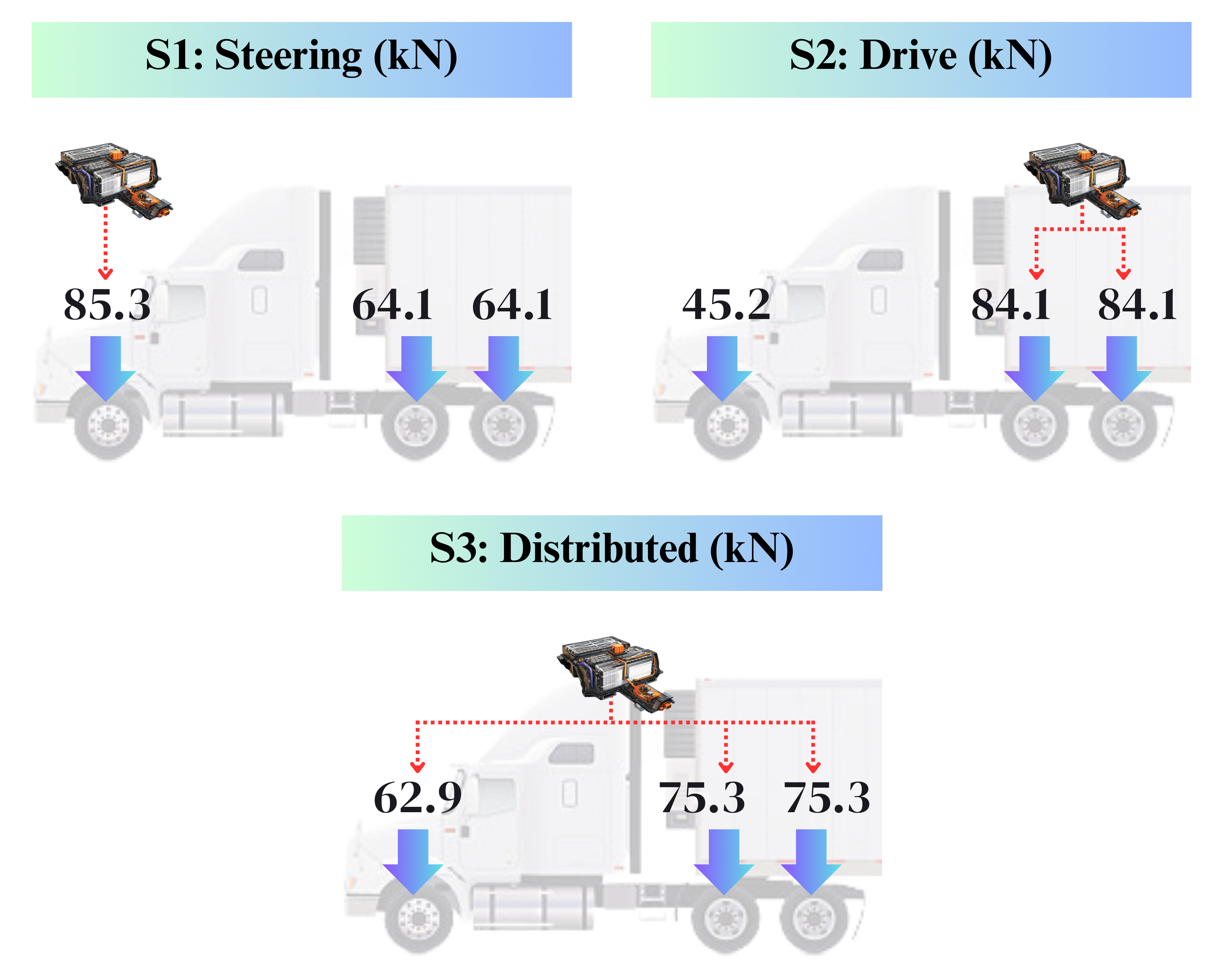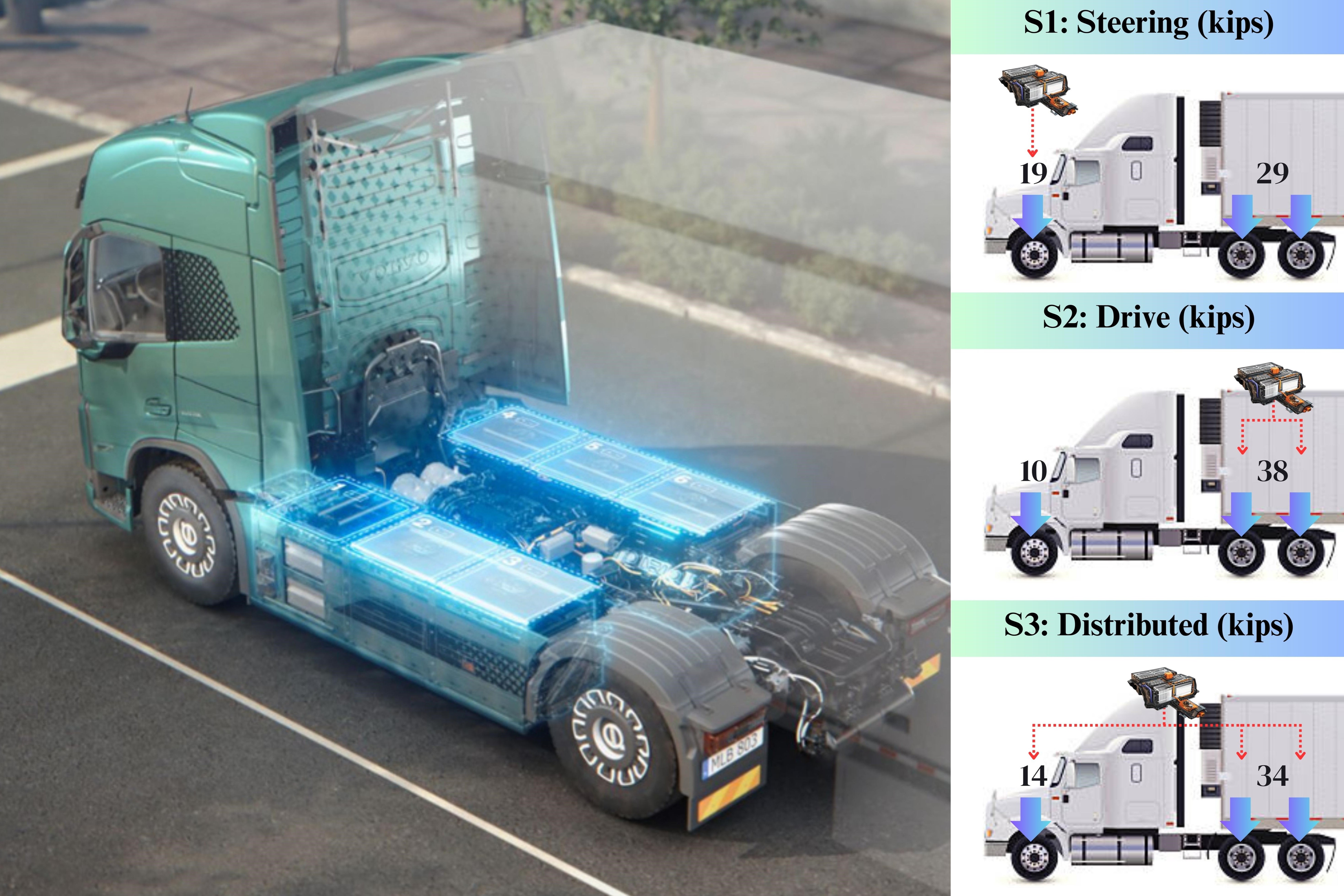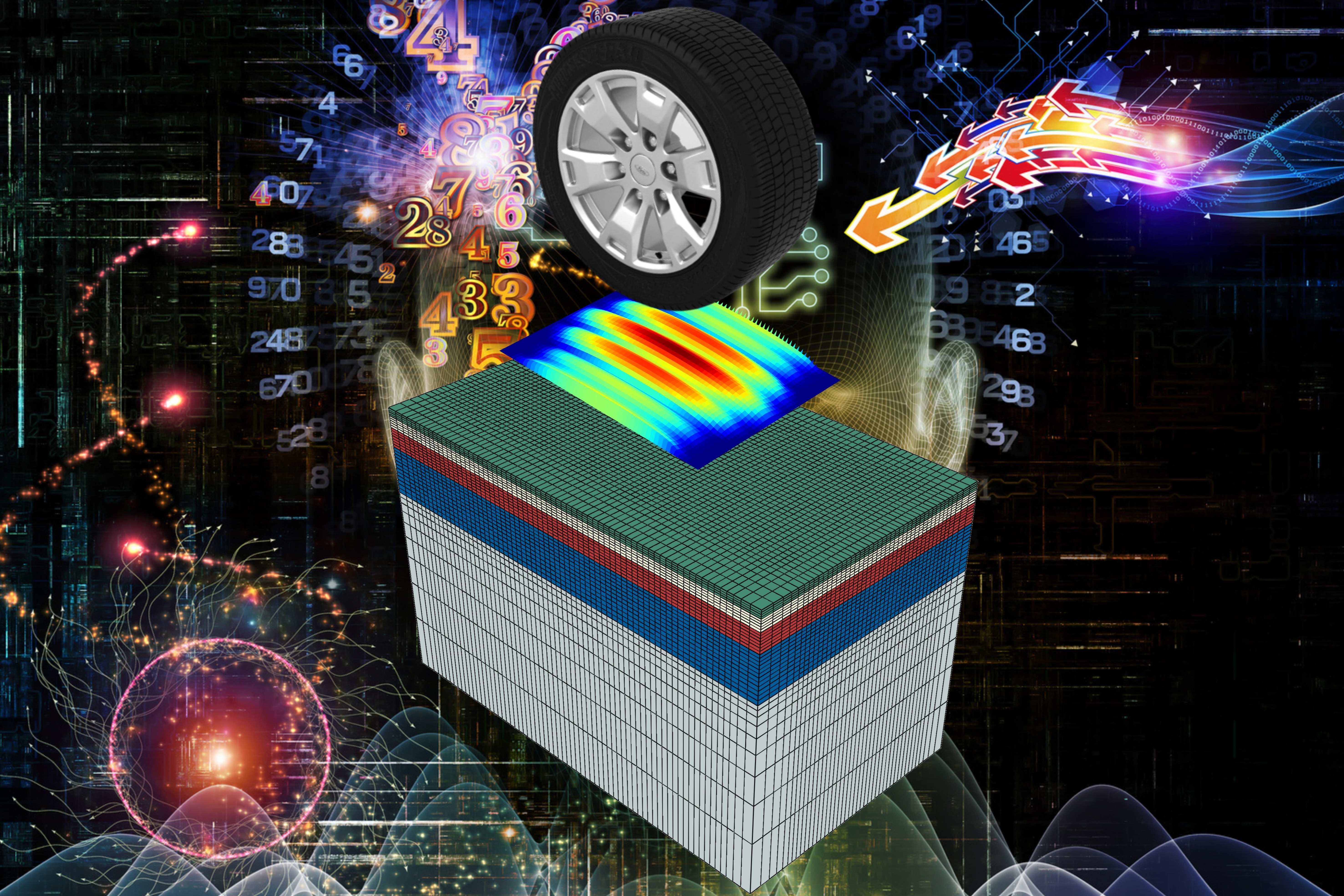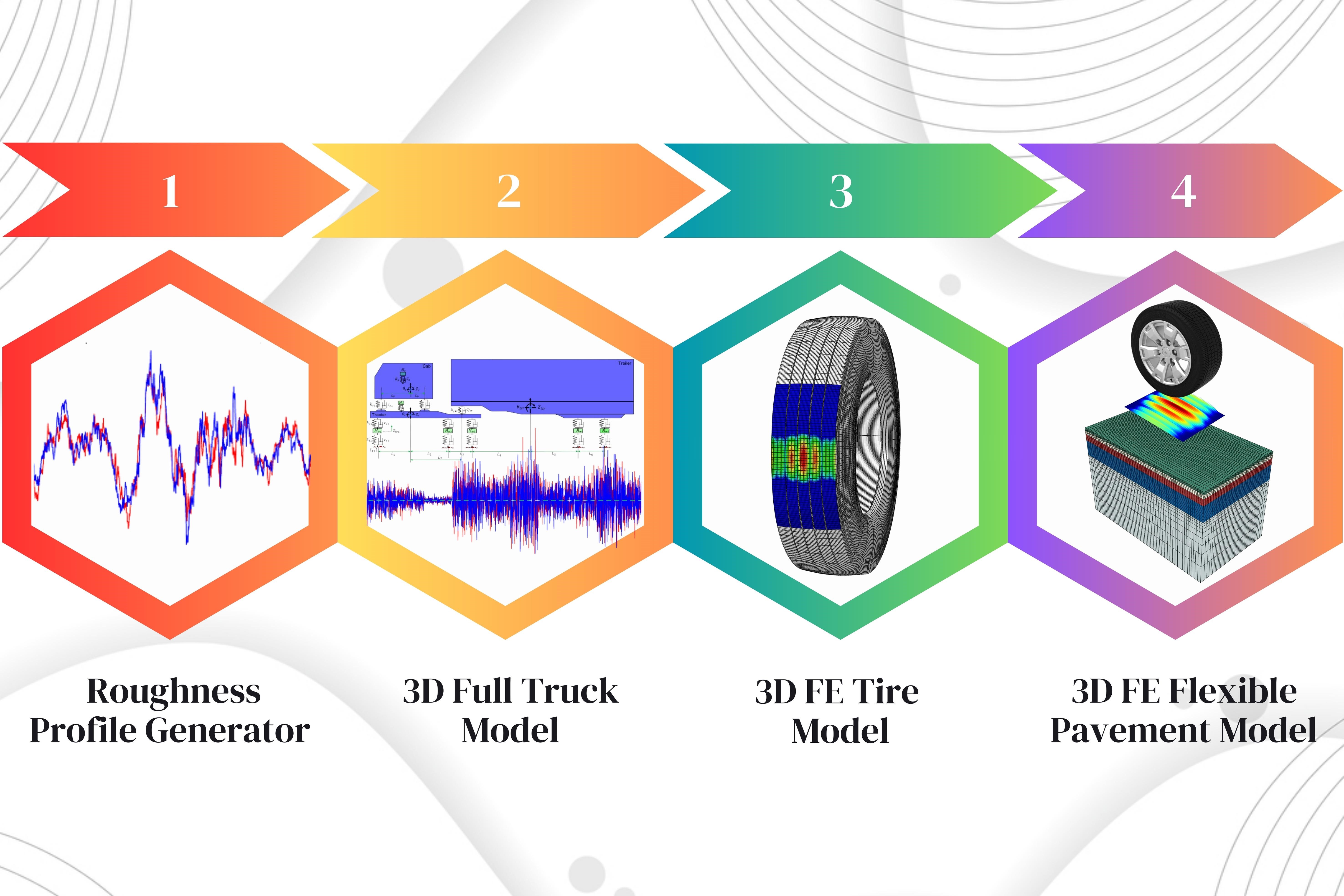ICT R27-252: Impact of Commercial Electric Vehicles on Flexible Pavement Performance
Principal Investigator(s): Angeli Jayme,
Jaime Hernandez
Courtesy Advising: Imad L. Al-Qadi
ICT-R27-252 is being conducted in cooperation with the Illinois Center for Transportation (ICT), the Illinois Department of Transportation (IDOT), and the U.S. Department of Transportation, Federal Highway Administration (FHWA).
Objective
This project aims to better understand how electric commercial vehicles like semitrucks will affect asphalt pavements. Electric semitrucks will carry additional weight from large baterry packs and will have increased capacity for torque and potentially different weight distributions. The research team will get a head start on the weight distributions and torque capabilities of these new vehicles and will conduct large-scale testing and numerical modeling to determine the effects on flexible pavements to identify solutions to potential pavement distress and damage. This project will help Illinois Department of Transportation (IDOT) become ready for the electrification of the commercial fleet, helping save time and money once electric commercial vehicles are in operation.
Project Deliverables
The expected outcomes of this project are: i) Modifications to Chapter 53 of the Bureau of Design and Environment (BDE) Manual, and ii) Modification to policies for corridors identified for commercial electric vehicles (design, preservation and maintenace). The research approach follows the next major tasks:
- Task 01: Review Effect of Torque and Axle Load on Flexible Pavement System
- Task 02: Evaluate Impact of Torque and Weight of Electric Trucks on Contact Stresses
- Task 03: Optimize IDOT HMA Pavements and Conduct Numerical Analyisis of Flexible Pavements
- Task 04: Develop Guidelines for Potential Modifications of IDOT Pavement Design and Pavement Type Selection
- Task 05: Assess Impact on Life-Cycle Cost and Recommend Pavement Management, Desing, and Maintenance Modifications/li>
- Task 06: Prepare Final Report
Progress
- Task 01: Completed the literature review.
- Task 02: Prepared tire-pavement contact stress database, considering various loading and rolling conditions. In addition, generated new contact stresses under different EV weight and torque level combinations using finite element modeling.
- Task 03: Selected the pavement sections and identified pavement materials within ICT database as candidate material inputs.

Fig 1. Load Distribution Scenarios
Preliminar Findings
- Based on the comparison of resulting contact forces and the kernel density estimation that captures the stress distribution, the load increase has a much greater impact than the change in speed for both ICEV and EV.
- Analysis at a 6% slip ratio significantly affects the longitudinal contact forces and proved that careful consideration of the rolling condition must be part of any analysis aiming to quantify HD-EVs pavement damage.
Last updated on August 14th, 2023



